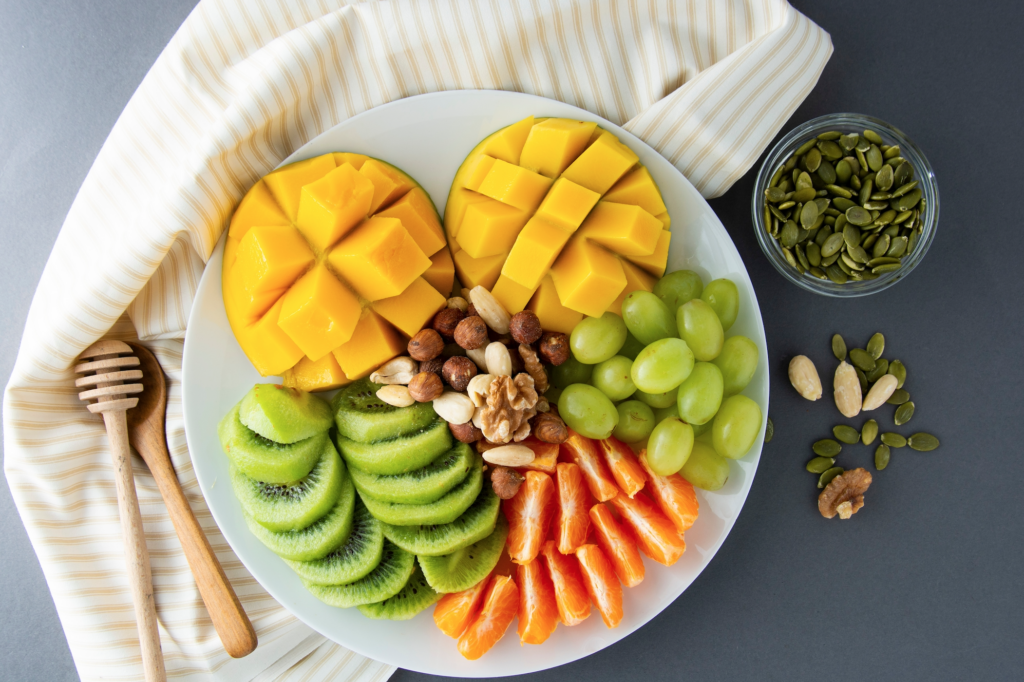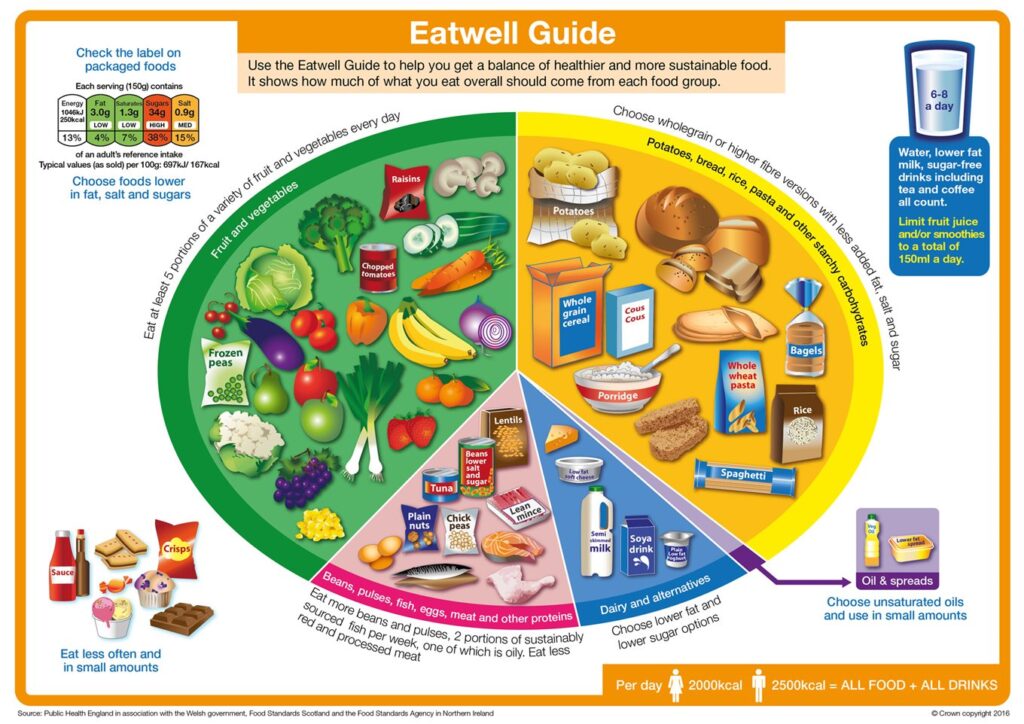Your body needs a variety of different nutrients to stay healthy. That means eating a varied diet and foods from each of the main food groups.
The EatWell Guide (above) was designed to make healthy eating easier. It shows the different food groups and how much of each we need to have a healthy diet. Eating the right amount from each food group is called eating a “balanced” diet.
Eating well is important for all of us and should be taken seriously. In the short-term, it can help us to feel good, look our best and stay at a healthy weight. In the long-term, a healthy, balanced diet can reduce our risk of heart disease, diabetes, osteoporosis and some cancers.
What are the main food groups in the EatWell Guide?

-
Fruit and vegetables – Eat at least five portions every day. This section should make up just over a third of the food you eat each day.
-
Potatoes, bread, rice, pasta and other starchy carbohydrates – base your meals on these and choose wholegrain more often. Starchy foods should make up just over a third of the food we eat.
-
Dairy – Have some dairy or dairy alternatives. Choose lower-fat and lower-sugar options where possible.
-
Proteins – Eat some beans, pulses, fish, eggs, meat and other proteins. Have 2 portions of fish each week, one of which is an oily fish.
-
Oil and spreads – Choose unsaturated oils and spreads in small amounts. Some fats in our diet are essential, but we need to think about the type of fat we add to our food, because generally we are eating too much saturated fat.
-
Fluids – Drink six to eight cups / glasses of fluid a day. Limit fruit juice and/or smoothies to a total of 150ml a day.
What are the foods to eat less often?

Foods and drinks high in fat and sugar such as:
- Cakes
- Biscuits
- Chocolate
- Sweets
- Puddings
- Pastries
- Ice cream
- Jam
- Honey
- Crisps
- Sauces
- Butter
- Cream
- Mayonnaise.
These foods are not needed in the diet so, should be consumed occasionally as a treat and in smaller amounts.





